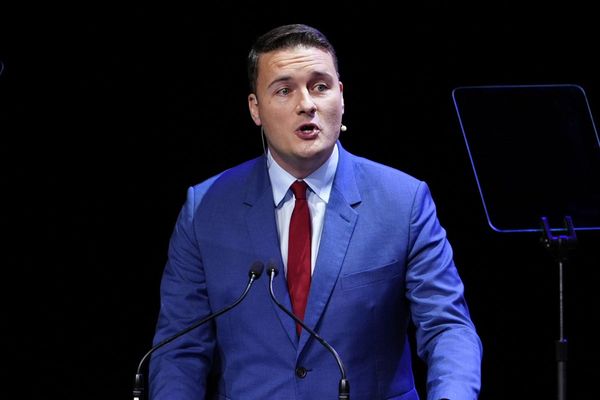“If Congress wins this election, it will be because of Dhruv Rathee,” declares a young Muslim man in Uttar Pradesh. Another group of young Jatav men in Agra list out who they follow — Mr. Rathee is top on the list as are local online “influencers.” Even a young supporter of the ruling Bharatiya Janata Party (BJP) from the Rawat community in Mohanlalganj admits that he regularly listens to Ravish on YouTube. Strikingly, almost everyone can recount the content — the details of the different shows and episodes of these influencers.
This is the first ever social media election in India. Social media has created avenues for alternate viewpoints outside of the spectre of state control and in the process successfully created a cognitive dissonance with the government narrative.
Changing contours
Till recently, social media has been a tool deployed by the BJP and Prime Minister Narendra Modi himself. In the early part of the decade, a “right wing ecosystem” emerged on social media to generate cognitive dissonance with the existing traditional media. The traditional media, in those early years did not indulge in active fear mongering. This was the role occupied by the right wing social media, which was openly politically colored and pushed the boundaries of decency with commentary on Muslims, women, and re-telling of history. As Kunal Purohit notes in his incisive book H-Pop: The Secretive World of Hindutva Pop Stars, “It provides ways to disseminate hate and stoke anger against minority groups and rivals each day, without ever becoming a tangible event, like a hate speech rally or a riot.”
But things have changed, especially as traditional media began to echo much of the content from the right wing ecosystem, saturating the type of content that was received. People are not being fooled; even core BJP supporters recognise the extent of this control. In the words of a BJP supporter we spoke to, “The media only speaks for one side (the BJP).” With a more diverse population using mobile phones and as more people searched for alternate viewpoints, an opportunity was created for critical voices. Crucially, these voices don’t align themselves with any political party, allowing them to garner the credibility vacated by the traditional media. Thus many we spoke to said that it was easier to get the true picture of what is happening in India through social media. Paradoxically, the traditional media’s shift to more provocative, biased content for survival, may have ensured its death.
Influencers with views that challenge the dominant narrative have been quick to catch on, helped by the algorithms. A feature of the algorithms used in YouTube and Facebook is that content that is growing quickly in popularity will be boosted to the whole user base. Indeed, Mr. Rathee’s video titled, “Is India becoming a DICTATORSHIP?”, has already garnered 25 million views on YouTube. This is also certainly an undercount, as snippets of the video have been circulating all over social media platforms.
Social media has also offered a space for political engagement of an increasingly reticent voter, silenced due to the prevailing environment of fear. In Mohanlalganj, we meet a local Instagram influencer from the Jatav community who reads shairi and remains publicly apolitical. But his frustration against the BJP is growing. He tells us, “I see and hear everything. If I speak, I will have trouble.”
Social media has most rapidly been adopted by the educated youth population. The youth was once viewed as the core support base for Mr. Modi. However, after 10 years, the aspiration is largely gone and for many, frustration has come in its place.
The Kurmi population is pivotal in many parts of central and eastern Uttar Pradesh. Once fully behind the BJP, division among them is palpable in Barabanki. Educated youth frustrated with the lack of jobs and armed with a narrative derived from social media, have moved away from the BJP — and it shows in the results. In 2019, the BJP swept the Barabanki parliamentary constituency, but in the 2022 State election, it lost three of the five assembly constituencies that comprise the parliamentary constituency.
At a very basic level, this is a positive development. In a democracy, diversity of opinion and active contestation of political views are critical. That these spaces are being prised open is an indicator of the sites of democratic reclaiming that are emerging in India.
However, the long-term implications need greater interrogation. First, political narratives are now being shaped outside the formal party system. Traditionally, the party worker and the political intermediary presented voters with political narratives, connecting them with the political ideologies with which they were aligned — generating policy demands from the bottom up. But social media is making the party workers and intermediaries less relevant. This enables greater centralisation within political parties, as the leader can directly shape narratives. Algorithms also ensure deeper polarisation. What this will do to party structures and more significantly the public sphere remains to be seen.
Regardless, the emergence of social media as the key player in this election has everything to do with the complete abdication of the bulk of traditional media from its professional purpose of framing political issues with credibility. What does this portend for reasoned discussion and the health of Indian democracy? This is the question that the 2024 election raises.
Yamini Aiyar is a Public Policy Scholar; Neelanjan Sircar is Senior Fellow, Centre for Policy Research







